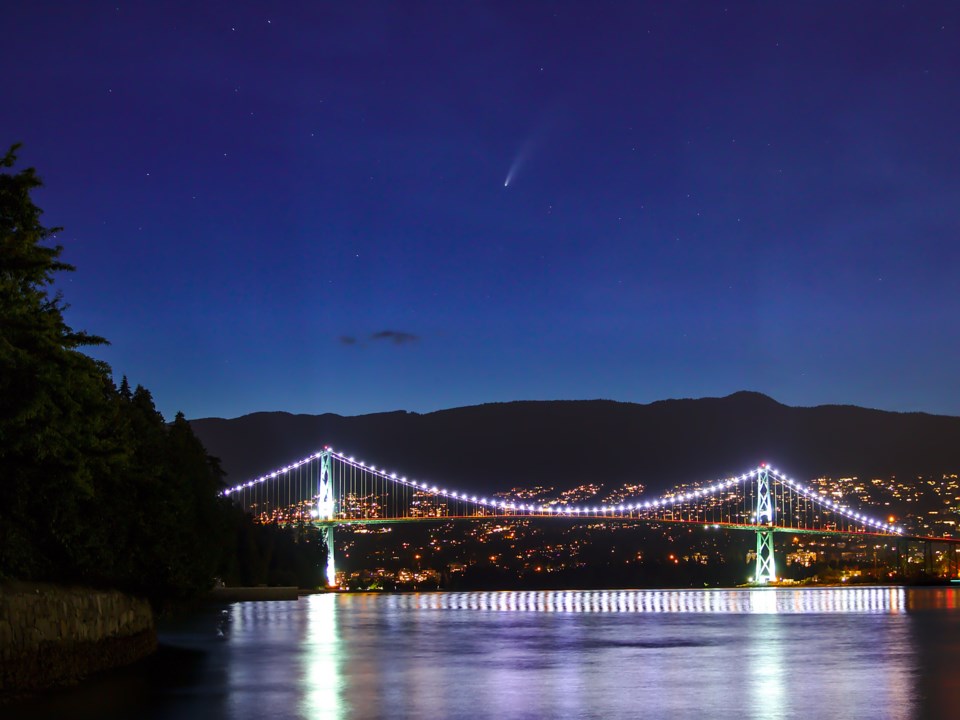Comet Nishimura hasn't been around these parts for a while.
In fact, the last time it orbited into Earth's neighbourhood William Shakespeare probably hadn't been born. And if he was, he was just another struggling writer working in whatever coffee shop was popular in the 1580s.
The recently discovered comet has an orbit of about 437 to 486 years, and 2023 is the year it swings by our part of the solar system. Right now it's barrelling towards the sun at 60 km/s (the s stands for second, as in the comet would travel from Vancouver to Seattle in about 3 seconds).
It'll be at its closest to Earth around Sept. 12 or 13 and may be visible to the naked eye for a few nights.
Spotting Nishimura in Vancouver
However, it won't be easy for people in Vancouver to get a good view of Comet Nishimura. Along with light pollution from living in a city, there's an issue of how high in the sky it will be.
At the same time, there's the fact that the comet will be at its highest in the sky around the same time as the sun.
Also hampering local efforts is the fact that it will rise in the east (just to the north of the east, to be precise), in the predawn light.
While it's not likely visible to the naked eye yet, those with telescopes or big zooms on their cameras might be able to spot the comet now on the western horizon early in the morning, just before the sun rises.
Unfortunately, in the evenings the comet will be below the horizon. It actually sets around the same time as the sun until about 3:30 a.m. each morning. It'll rise a little later each day.
For those trying to spot it, the comet will have a slightly greenish hue to it and may look like a smudge more than a clearly defined point of light with a trail.
C/2023 P1 Nishimura 2023 sep. 5 2.30 UT 15min 16"/3.2 Moravian G3-16200 and Leica Apo-Telyt 280/4.0 10x90sec Nikon Z50mod Michael Jäger pic.twitter.com/B0NqccGnWD
— Michael Jäger (@Komet123Jager) September 5, 2023



